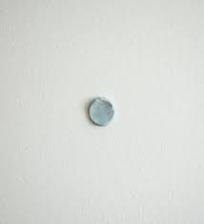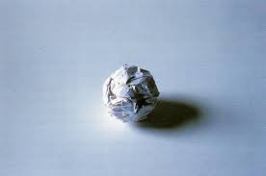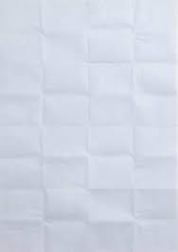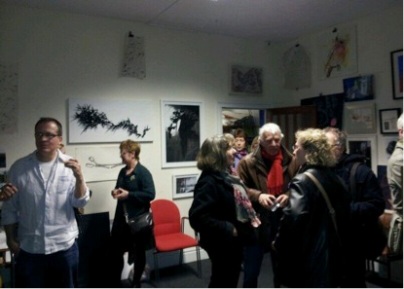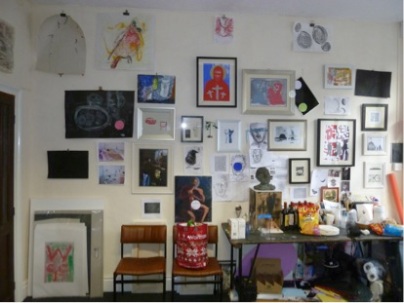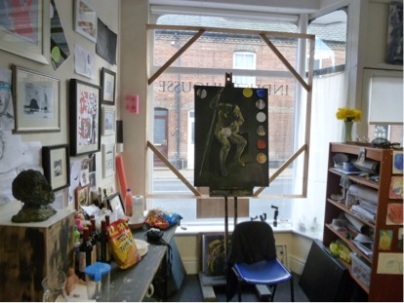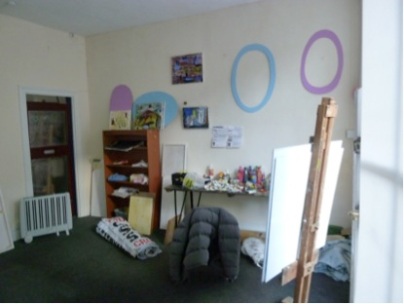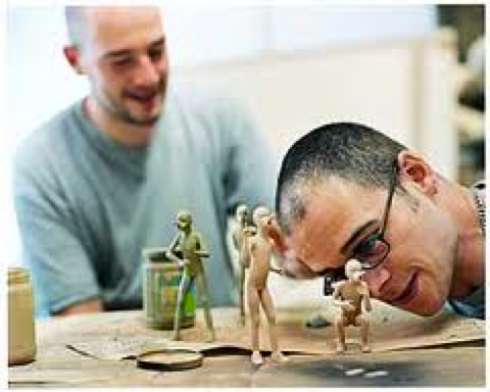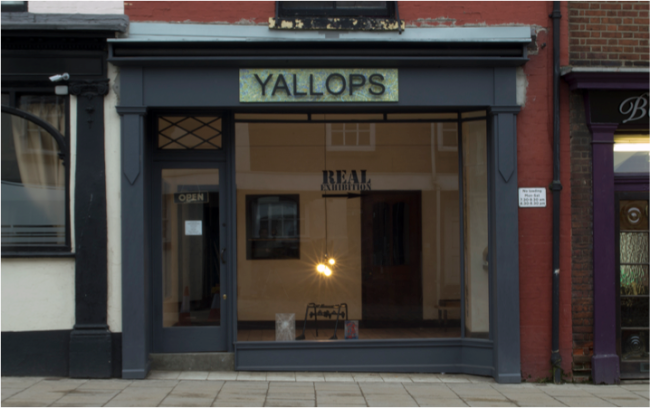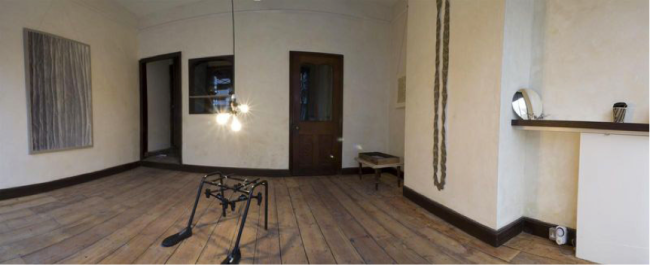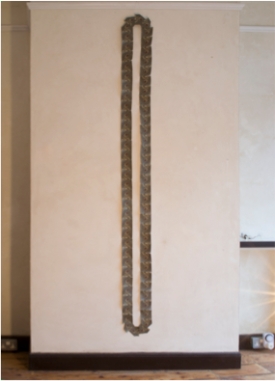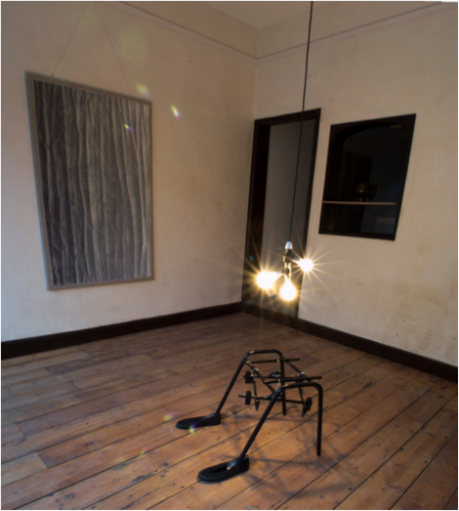I want to argue with my own instincts in this review because I like the work of Martin Creed. I think there would be little of interest to say except that I liked the show and then to single out particular exhibits that I found most interesting and explain why. I think it might be far more interesting to take a contrary position and to attempt to argue against Creed’s work and my own attraction to it, in order to examine the nature of my interest. I also think one has the fiercest arguments with those one is closest to. Because I see many similarities between my work and that of Creed’s, I feel as if I am arguing with myself, if that doesn’t sound too pretentious.
The exhibition is the first time that London has had a major review of Creed’s work, and builds on the splendid run of exhibitions that the Hayward has had over recent years. It is also the first large-scale collection of his work to be shown since he won the Turner Prize in 2001.
Ranging from the whimsical to the downright offensive and shocking, the exhibition comprises extensive tones and much light and shade. It has been well constructed in this regard, with moments of high drama punctuated by reflective calm. But I wonder whether Creed and the curatorial team have worked too hard and too self-consciously to manipulate the audience.
The exhibition begins with a revolving neon sign on a huge scale – resembling some demented Angel of the North with dangerous and threatening arms like helicopter blades barely above head height and liable to take your head off. The neon says ‘Mothers’ and one is hit (sic) by the Kleinian good breast bad breast dichotomy of the mother, both omnipotent and potentially castrating or beheading. Is this symbolism gone mad or part of some wider meditation on Mothers’ role in society? We are left to ponder, but only slightly because the power of the piece and its scale tells us all we need to know about how he regards mothers. And if we were in any doubt, the room is made further unnerving by the presence of his piece Work Number 189. It’s a large collection of metronomes lining the wall and all beating a different incessant rhythm. The effect is to increase the heart rate and make you feel sick and uneasy. It is hard to remain static amid this heightened state of anxiety, juxtaposed to the swinging outstretched arms of the enraged Mothers. Certainly one is assaulted as soon as one enters, and not for the only time either in this exhibition.
On a positive note, it is impressive to see that the Hayward are happy to destroy the fabric of their building to accommodate an artwork, in this case the Mothers piece. The gallery has sawn off a number of the original concrete balustrades to accommodate the swinging arms of Mothers on the ascending ramp to the next room. This also adds to the danger of the piece suggesting that the arms have taken out part of the building in the same way they threatened to take off your head. Again, is this is more manipulation of the senses.
The next irritating thing about the exhibition is the free guide you are given when you enter. Instead of providing the visitor with a room-by-room breakdown of the works or even the major highlights, we are treated instead to an A to Z of Martin Creed. I was left wondering whether some retrofitting of titles was necessary to include all letters. On one level, the taxonomy is an interesting idea in a guide. It suggests global and intellectual transcendence. More interesting and more modest would have been the absence of one the major letters from this alphabet. But no, they are all ticked present and correct from Dogs to X’s and Z is Ziggurat. It’s a little too neat and too predictable and I thought Creed was smarter than that.
Creed’s grander gestures tend to fall flat in this show. Take the car on one of the balconies which starts up automatically, followed by all the doors, the boot and bonnet opening and the radio blazing out, then just as suddenly, they all slam shut and are quiet. It’s a bit too obvious and leaves you feeling empty as you gaze at the kit of hydraulics which effects the openings and closings – more interesting might be the kit without the car. Just the hydraulics opening and closing nothing would have been very powerful.
The next grand gesture is a large brick wall on another balcony that is made from a multitude of different brick types and forming a striated elevation as pointless and it is striped and seemed to echo the sky scape around rather obviously. It did not add any insightful comment bar the apparent.
The greatest grand gesture I missed because of bad sign posting. This comprised a vast projection of a penis gradually rising from recumbent state to its rigid priapic greatness. This was on another outside balcony and again mimics the phallic erections beginning to fill the London skyline. It was rather too obviously poking fun at the Gherkin and Mobile Phone (all penis extensions of their architects or commissioners) and all presumably liable to fall flat at some point as their energy and power wanes. Like all erections, including this one, they will end up looking limp and pathetic. One artist (Tracy Brock) who saw it on another visit described it as ‘majestic’ and was clearly impressed by it. The piece itself had a health warning that it comprised adult content. Was this nanny state over zealousness after all, aren’t we inured to things like this? What boy hasn’t experienced an erection? And boys get them after all from their earliest infancy, often while being suckled by their mothers (Klein again?). And what girls in mixed households will not have observed the difference and acrobatics of their male siblings appendages?
The piece provided interesting counterpoints to be sure with architecture, but in the two thousand and teens, haven’t we gone beyond the need for artworks that deliver an obvious jokey punch line? Ok so his naming of artworks is not in the same offensive league as those more pointless jokey titles that many YBAs excelled in. But even when the title is absent, the joke isn’t and therefore the artist (Creed) needs to ask himself is he going too far?
The artist Steven Geddes accompanied me on this visit and he pointed out that it is worth keeping every piece of work, every crumpled or folded piece of paper, as they can be an artwork if presented in the right way. He was alluding to the fact that a screwed up ball of paper was presented in a vitrine and folded pieces of A4 were opened out and framed on the wall.
Steven Geddes was not being ironic either, but pointing out how important it is for an artist to keep things, especially one like Creed where everything and nothing can become an artwork. Is Creed being ironic in what he offers up as art? I think not. To end on a positive note, his work shows that a good artist can make us look at things in a new way, whether they are folded bits of paper; a piece of blu-tack on the wall or a film of a pretty girl taking a dump on the floor of a white cube gallery space.





